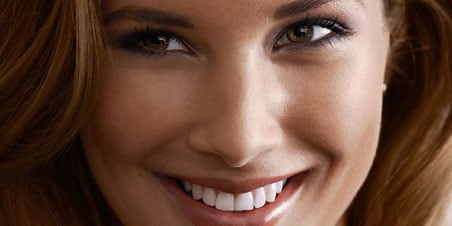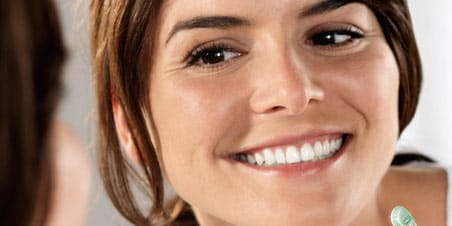Should I use an electric or a manual toothbrush?
4 min. read
Choosing the right tools is key to taking the best possible care of your teeth. So, should you go for an electric or manual toothbrush? To decide which one is best for you, it’ll help to understand the differences between manual toothbrushes and electric toothbrushes, as well as the techniques of brushing your teeth with an electric brush. In this article we will explore the difference between using an electric or manual toothbrush, in addition to electric toothbrush benefits including: Read on for our simple guide to electric toothbrushes, including the simple steps for brushing teeth with an electric toothbrush.
Electric or manual toothbrush: The differences
It’s important to know the key differences between the two types when it comes to choosing between an electric or manual toothbrush. Other than the fact stated in the name, that electric toothbrushes are powered by electricity, here’s what that means for how they brush your teeth:
Top 5 electric toothbrush benefits
So, you’re wondering “should I use an electric toothbrush?” The answer is yes! Here a few of the top electric toothbrush benefits: 1. Using an electric toothbrush is more efficient than using a manual brush. 1 With studies showing the average person only removes 50% of the plaque on their teeth during brushing, anything that can ensure more efficiency and better oral hygiene has to be a winner. The Philips Sonicare DiamondClean 9000 removes up to 10 times more plaque than a manual toothbrush.
Recommended products
-
- Up to 10x more plaque removal*
- Up to 7x healthier gums**
- Pressure sensor
- 4 modes & 3 intensities
2. Electric toothbrushes are easy to use. 3. Choosing an electric toothbrush can help to limit waste. 4. Knowing how to brush properly with an electric toothbrush can improve your oral health. 5. Many electric toothbrushes come with bonus features. Now you know the key electric toothbrush benefits, it’s time to learn how to brush properly using an electric toothbrush.
An electric toothbrush takes away some of the hard work when it comes to brushing your teeth. In cases where users have dexterity challenges such as young children, or people with arthritis or disabilities, an electric toothbrush can help them brush more effectively. 2
We all know that changing our toothbrush regularly is important for health and hygiene reasons, 3 but the great thing about electric toothbrushes is that you only have to change the head. Keeping the handpiece reduces waste.
We all know that following the correct method for toothbrushing is key to maintaining our oral health, and as electric toothbrushes are more efficient, 1 in turn this makes them ideal for improving your oral health. By improving the reduction of plaque, using an electric toothbrush can help to lower your risk of gingivitis or the development of cavities.
There are a number of fantastic bonus features offered by electric toothbrushes which make them the go-to option when choosing between a manual vs electric toothbrush:
How to use an electric toothbrush
Brushing your teeth with an electric brush requires a slightly different brushing technique to a manual one. So, if you have an electric toothbrush, follow these steps for brushing teeth with an electric toothbrush: With this guide to how (and why) to use an electric toothbrush, you should be better equipped to choose the toothbrush best suited to your teeth – and to maintain a healthy smile. Sources:
1 https://www.ncbi.nlm.nih.gov/pmc/articles/PMC3652371/
2 https://www.ada.org/resources/research/science-and-research-institute/oral-health-topics/toothbrushes;
https://www.healthxchange.sg/head-neck/oral-health/brushing-teeth-tips-tricks
3 https://www.cdc.gov/oralhealth/infectioncontrol/faqs/toothbrush-handling.html






